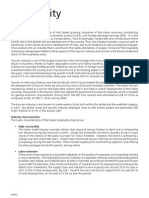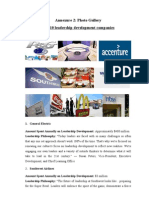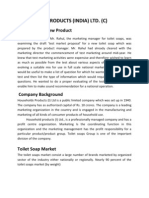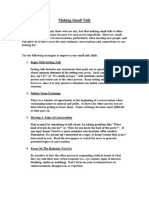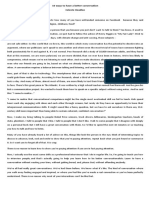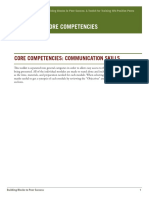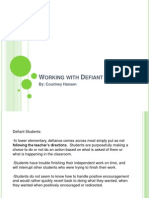0% found this document useful (0 votes)
7K views4 pagesBlinkst - The Art of Witty Banter
The document outlines techniques for mastering witty banter and engaging conversation, emphasizing the importance of frameworks like HPM, SBR, and EDR to navigate dialogue effectively. It highlights the significance of humor, playful teasing, and building rapport through shared experiences, while also advising against absolute questions that can stall conversations. Additionally, it discusses the use of fallback stories and witty comebacks to maintain engagement and keep interactions lively.
Uploaded by
wfcfongCopyright
© © All Rights Reserved
We take content rights seriously. If you suspect this is your content, claim it here.
Available Formats
Download as DOCX, PDF, TXT or read online on Scribd
0% found this document useful (0 votes)
7K views4 pagesBlinkst - The Art of Witty Banter
The document outlines techniques for mastering witty banter and engaging conversation, emphasizing the importance of frameworks like HPM, SBR, and EDR to navigate dialogue effectively. It highlights the significance of humor, playful teasing, and building rapport through shared experiences, while also advising against absolute questions that can stall conversations. Additionally, it discusses the use of fallback stories and witty comebacks to maintain engagement and keep interactions lively.
Uploaded by
wfcfongCopyright
© © All Rights Reserved
We take content rights seriously. If you suspect this is your content, claim it here.
Available Formats
Download as DOCX, PDF, TXT or read online on Scribd
/ 4

